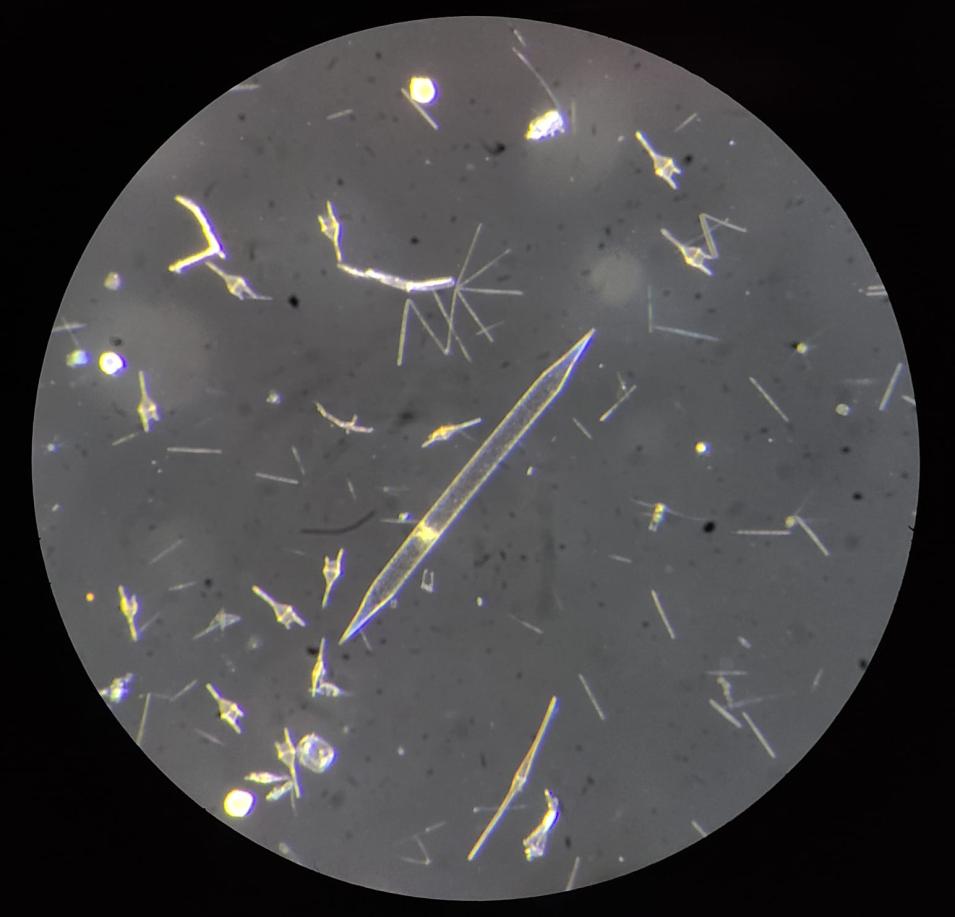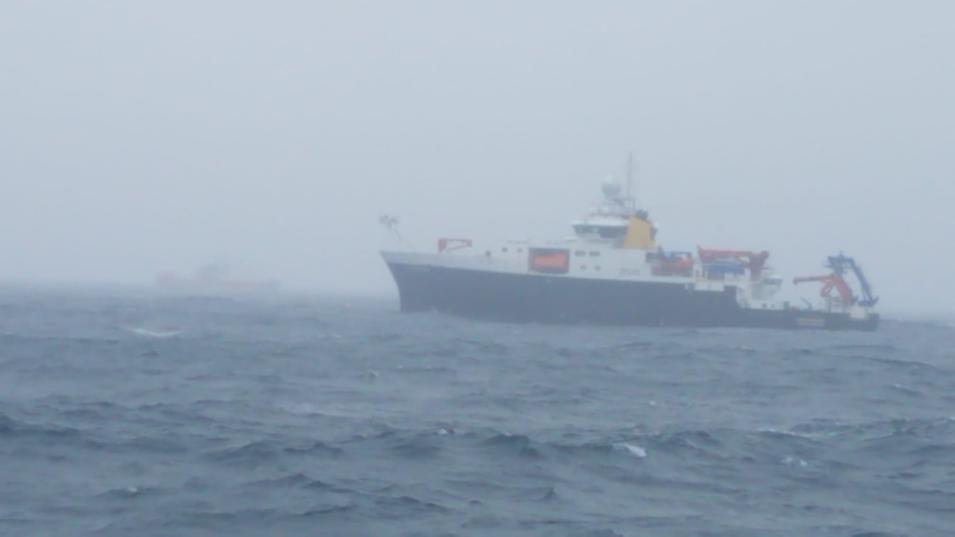EXPORTS headed to the North Pacific first because conditions were expected to be stable and calm and simpler from a carbon processing standpoint. Data handling was easier as well, and taken care of by Cetinić and a few people on the ships with only small-scale data transfers back to the project’s home at NASA’s Goddard Space Flight Center in Greenbelt, Maryland.
“Sampling in the North Pacific was like running through a meadow,” said Cetinić.
The North Atlantic, however, was another story. The second campaign was considered much more complex due to the COVID-19 pandemic, a higher number of scientific platforms, the more complicated biology and physics of the North Atlantic, technical issues, and, of course, weather.
“The North Atlantic was megastorm after megastorm always changing the conditions,” said Cetinić.
During this second campaign, Cetinić relied on oceanographer and NASA Data Manager Dr. Inia Soto Ramos at Goddard to quickly organize, analyze, and assess the data coming from the North Atlantic.
“Every day we would use data from buoys, ships, and other sources to locate the center of the eddy we followed across the North Atlantic,” said Ramos. “These data were sent back to the chief scientists to guide them in repositioning assets and defining the sampling scheme for the next days.”
The Data Download
With the large variety of projects taking place during EXPORTS, researchers had an array of ways they were transmitting and storing their data. Much of the data were transmitted from ships through the Iridium Satellite Communications Network, where they were then distributed through FTP servers, websites, email, and other methods.
Cetinić and Ramos developed multiple strategies for wrangling the data. These ranged from using application program interfaces (APIs) to pull the information from servers to manually downloading data from websites. Once the data were in hand and checked for quality, Ramos forwarded them to EXPORTS collaborators at the University of Washington to plot the positions of assets and their current data on an interactive Google Earth map for quick reference and planning during the campaigns.
Archiving for Others
After the Pacific and Atlantic cruises were complete, NASA began acquiring and archiving the approximately 13,000 datasets gathered by the researchers. These agency efforts provide vital data to help power carbon cycle models under development and ensure the data can be accessed by researchers for other studies in accordance with the agency’s open science policies.
“There is now an incredible diversity and abundance of data,” said Cetinić. “For example, one instrument sampled water every 12 minutes for a month and could identify thousands of particles in just a tiny sample of water. This means there are now thousands of images that have to be properly archived—and that’s just for this one instrument!”
EXPORTS data are available through NASA’s Ocean Biology Distributed Active Archive Center (OB.DAAC), which is NASA’s repository for ocean biology and ocean color data. The data can be accessed through OB.DAAC’s SeaWiFS Bio-optical Archive and Storage System (SeaBASS).
SeaBASS was created to house in situ data for validating satellites making ocean surface measurements from space, but was not set up to handle the immense variety of types of data collected during EXPORTS. Ramos and the SeaBASS staff added approximately 400 new fields and parameters to the system to accommodate the new types of data from EXPORTS.
“Most of the data served to the public have a first level of processing, such as calibration and basic corrections, and all-optical data are assigned to an internal reviewer for quality analysis and control,” said Ramos.
EXPORTS project managers estimate that some of the researcher datasets are so big they could take years to submit. Ramos and the EXPORTS team are trying to make the process easier by working with researchers to make sure data are formulated correctly, checked for quality, and reviewed by a data management group.
“As a group, oceanographers are used to doing research and publishing papers; submitting data to repositories is not so ingrained in them,” said Ramos. “It’s a relatively new practice to make sure the data are available for others to use, so we help them do it.”
Through thoughtfulness, intelligent planning, and shear diligence, Cetinić, Ramos, and the rest of the EXPORTS team have developed an open, comprehensive, and accommodating approach for managing data across all stages of the mission. Their hard work has not only ensured that NASA has the data it needs to develop carbon cycle models, but also charted a data management path for scientific voyages to come.
Explore EXPORTS Data



